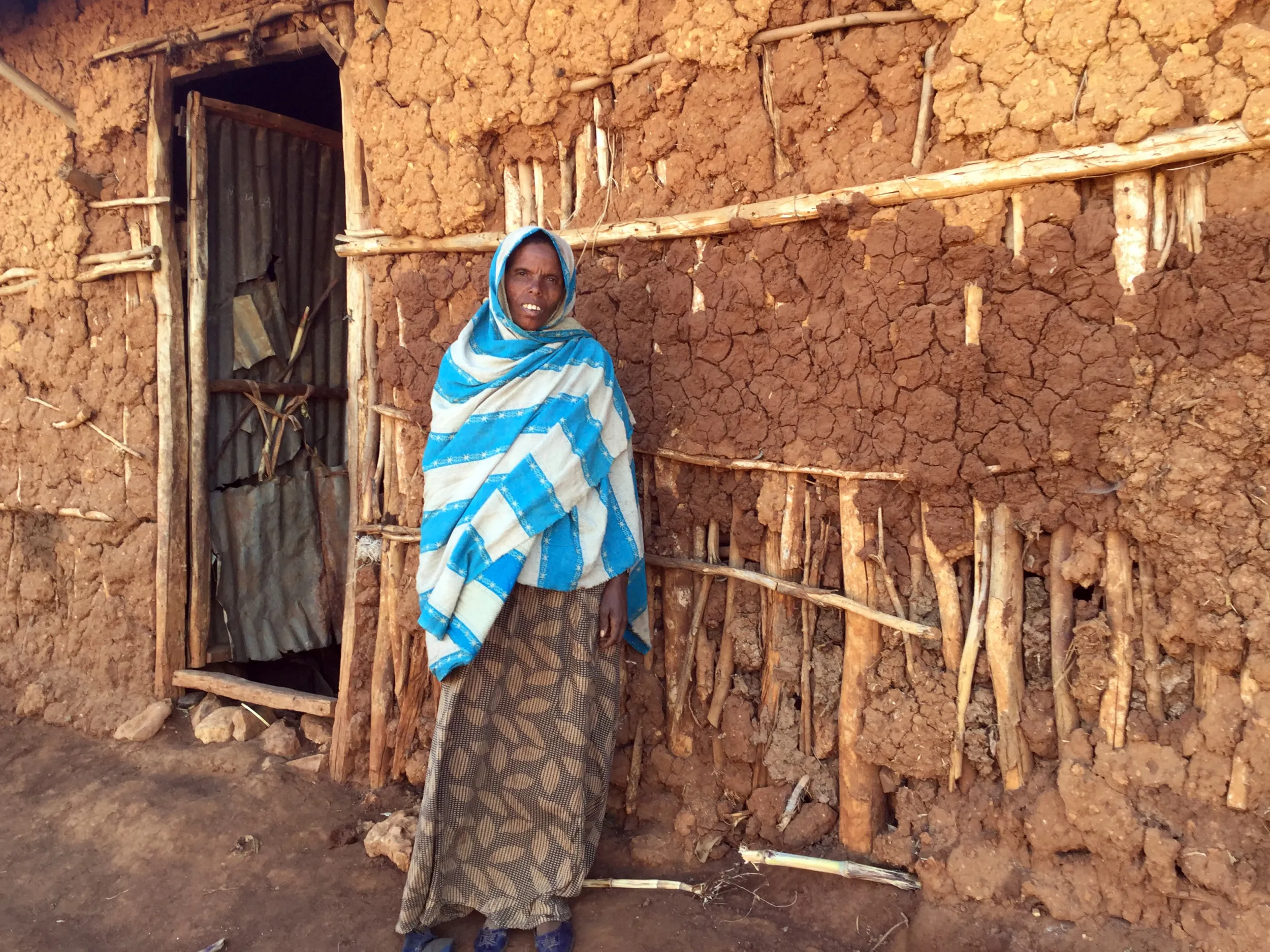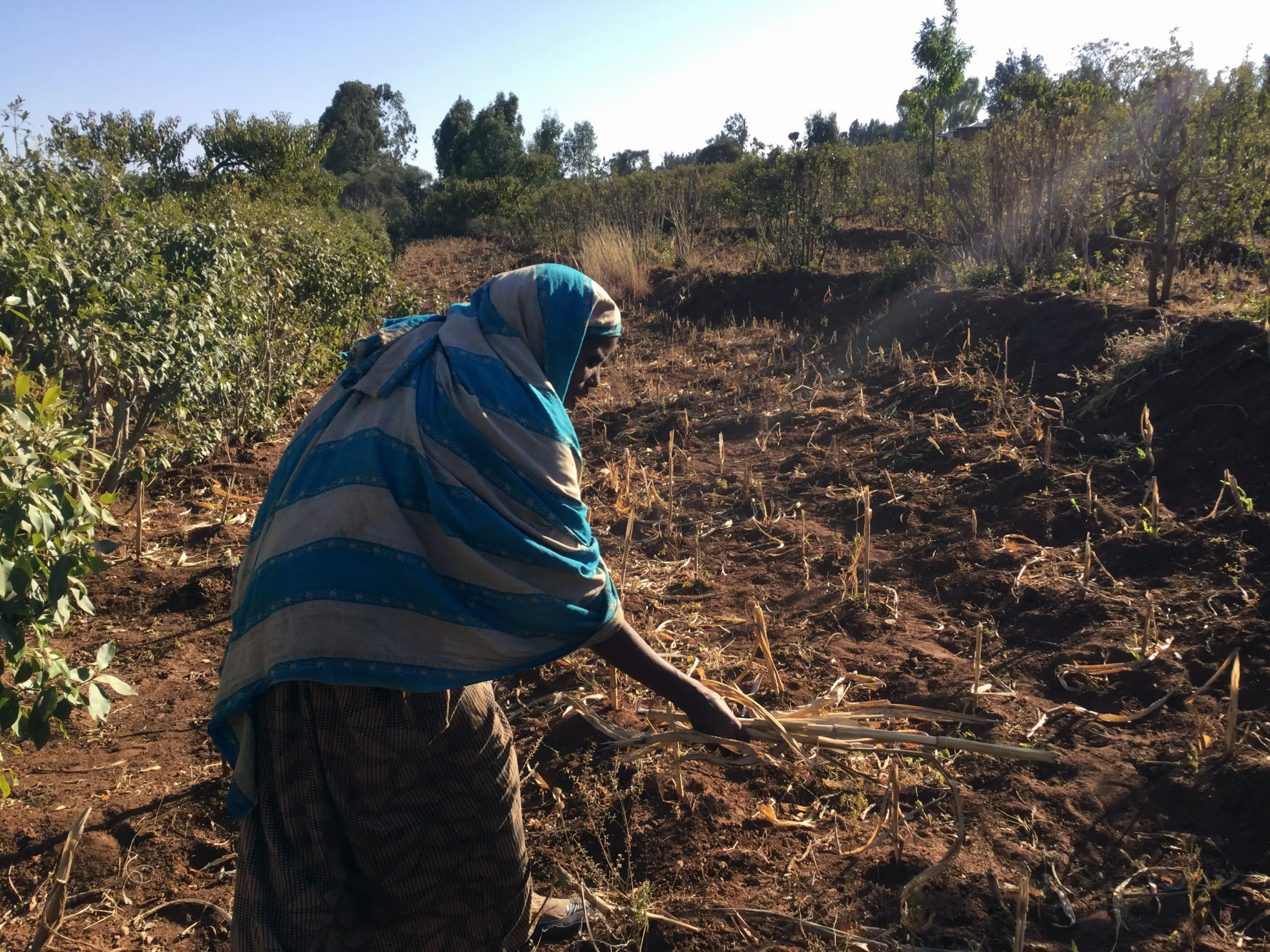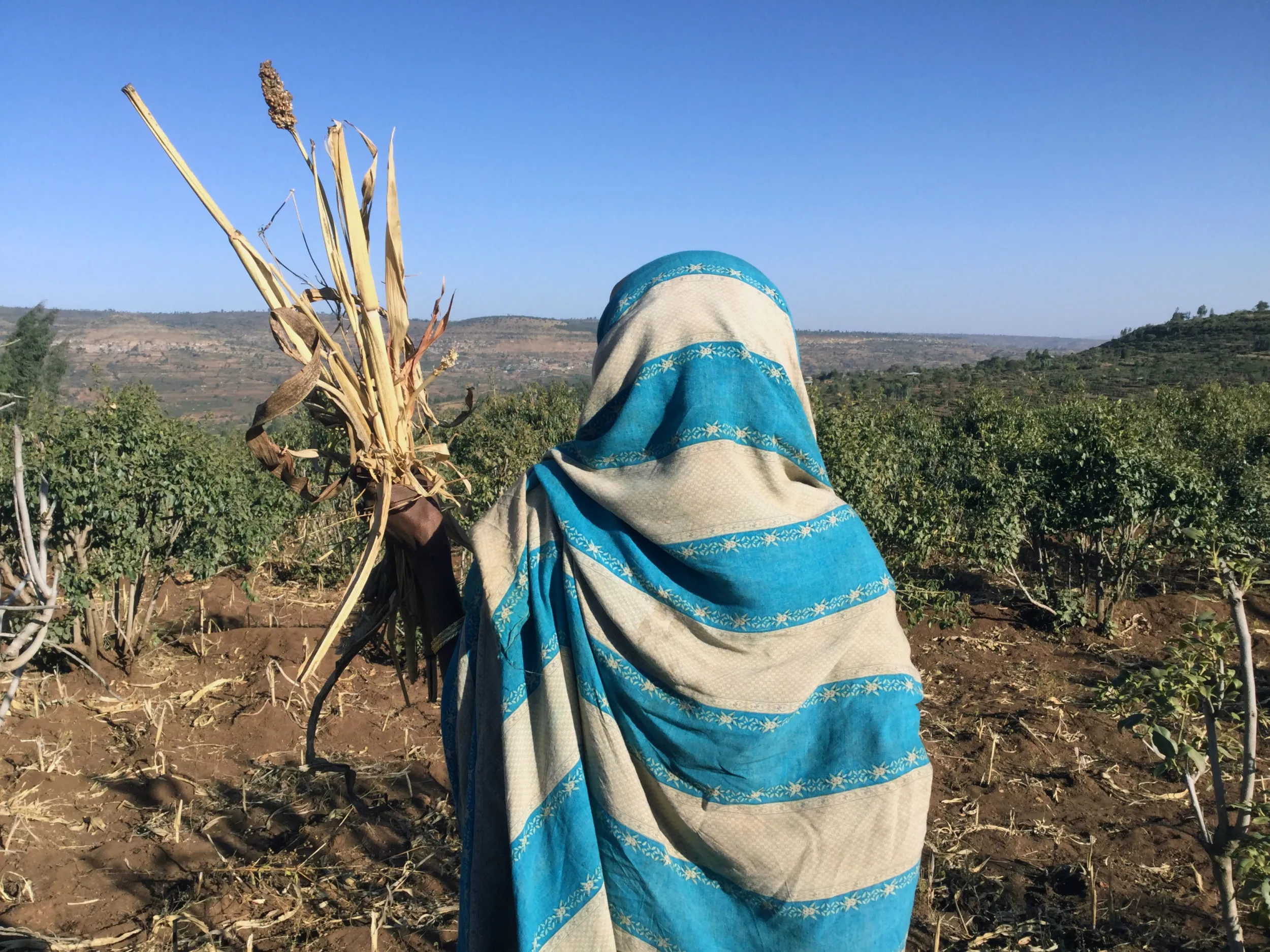Amina Ame Usman stands on her plot of land and picks up a stalk of sorghum from the dirt. The thin, yellow stalk is so dry it resembles hay, and she easily snaps it in half. Prior to the drought, the sorghum she grew was thick, leafy, and a deep green. It stood tall, but now she walks past shriveled plants.
Due to infrequent rainfall, Amina has not harvested anything this season. “The soil is fertile, but the problem is the water [shortage],” she says. Although she planted seeds, they didn’t germinate. “Now, we have nothing.”
Amina, a widowed mother of six, relied on the sorghum to make dough and injera — a thin pancake-like bread that’s a staple in Ethiopia — to feed her children. She also planted khat (a leafy plant used as a stimulant) to sell in markets and used the profits to provide for her children. Since the drought, which has largely affected the eastern part of Ethiopia the last six years, Amina’s family has been struggling.
The Usmans are among the 1.3 million people in Ethiopia’s East Hararghe Zone who are classified as food insecure, meaning they don’t have enough healthy food to eat. The drought has resulted in food and water shortages, and an increase in diseases such as scabies, measles, and malaria. Across the country, some 8 million people are going hungry.



